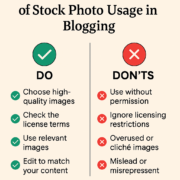The Ultimate Guide to Social Media Management for Marketers
Social media has shifted from leisure to essential for businesses, given its global user base of over four billion. It’s a crucial avenue for businesses to engage customers and expand their reach.
Social media management defined
Social media has transformed communication and marketing by providing businesses with a platform to increase brand visibility, interact with customers, and drive sales. Successful management requires strategic planning tailored to business needs, differentiating it from personal use.
Social media management includes tasks to maintain and boost a brand’s presence on social platforms, such as:
– Creating and publishing content: Developing engaging posts that resonate with the target audience.
– Interacting with followers: Engaging with users via comments, messages, and mentions.
– Tracking brand mentions: Monitoring discussions about the brand across social media platforms.
– Evaluating data: Analyzing the effectiveness of social media efforts to shape future strategies.
Essential Skills for Social Media Managers
To excel in social media management, several skills are crucial:
– Creativity: Formulating distinctive and engaging content that grabs interest.
– Strategic thinking: Devising and executing impactful social media plans.
– Analytical abilities: Examining data to understand audience behaviors and assess campaign effectiveness.
– Communication proficiency: Engaging with followers and skillfully conveying the brand’s message.
– Interpersonal skills: Building relationships within the online community.
Core responsibilities of a social media manager
Social media managers shape a brand’s digital identity, handling various essential tasks that collectively drive the success of its social media initiatives. One strategy they might use to boost engagement and visibility is to buying Instagram likes, which can help amplify a brand’s presence in competitive spaces. By strategically leveraging such tactics, they create a strong foundation for organic growth and long-term audience connection.
Social media strategy development
To create an effective social media strategy, follow these steps:
– Market research: Understand the target audience’s preferences and behaviors.
– Content planning: Develop a content calendar aligned with brand goals.
– Campaign execution: Manage and launch campaigns to achieve specific objectives.
Visual content and copywriting
Engaging content creation is crucial:
– Captions: Craft compelling text that complements visual content.
– Graphics design: Use tools like Canva or Adobe Creative Suite for eye-catching visuals.
– Video creation: Develop effective video content to convey brand messages.
Types of content
Include diverse content formats:
– Long-form content: Detailed articles or blog posts for platforms like LinkedIn.
– Short-form content: Quick posts suited for platforms like Twitter and Instagram.
– Live streams and stories: Real-time interactions and temporary content on platforms like Facebook and Instagram.
– Shoppable content: Posts facilitating direct purchases through platforms.
Community engagement
Build a loyal community by:
– Responding to comments: Foster relationships and address queries.
– Engaging in discussions: Participate actively in relevant online forums.
– Brand positioning: Share valuable insights to establish thought leadership.
Data analysis
Evaluate social media impact through:
– Monitoring KPIs: Use a social media monitoring platform to track metrics such as reach, engagement, and conversions.
– Analytics tools: Use platforms like Google Analytics and social media analytics.
– Strategy refinement: Analyze data to optimize future campaigns.
This streamlined version maintains clarity while emphasizing key points for each section of your original document.
Social media best practices
Adhering to social media best practices can significantly enhance your results. Here are 17 best practices to consider:
- Harness social media utilities: Use all-in-one social media management tools for content creation, scheduling, and performance analysis.
- Understand platform guidelines: Adhere to specific rules and restrictions of each social media platform.
- Repurpose content: Share valuable content again to expand your reach and reinforce key messages.
- Choose the appropriate platforms: Focus on channels that effectively connect with your desired audience.
- Enhance your profiles: Complete all sections of your social media profiles with relevant details.
- Secure your usernames: Reserve your preferred username across all platforms to maintain brand uniformity.
- Monitor discussions: Stay vigilant about brand mentions and actively participate in conversations.
- Engage in social listening: Keep updated with industry trends and discussions to guide your decision-making.
- Harness hashtags: Increase post visibility through the strategic use of relevant hashtags.
- Study your competitors: Gain insights from their tactics to effectively distinguish your brand.
- Broaden your content offerings: Share diverse content formats to maintain audience interest and interaction.
- Experiment with posting frequency: Determine the optimal posting frequency to keep your audience interested.
- Time your posts strategically: Schedule posts during peak audience engagement times.
- Plan posts in advance: Utilize scheduling tools to maintain a consistent posting schedule.
Conclusion
Social media offers unparalleled opportunities to engage globally, foster loyalty, and achieve business goals. Effective management hinges on strategic planning, creative content, and active audience interaction. Social media managers shape brand identities, crafting strategies, compelling content, and refining initiatives through data. Embracing platform dynamics enhances visibility and builds lasting audience relationships, defining business success in the digital age.




